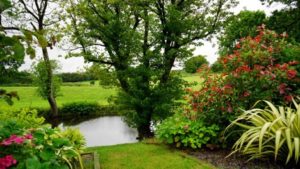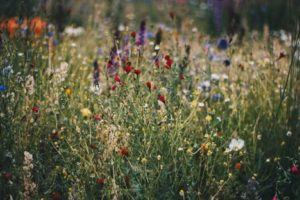
Creating and maintaining sustainable landscapes is one of the best things you can do to protect and preserve the environment. Sustainable landscapes restore habitats, increase energy efficiency, sequester carbon, and keep the surrounding air and water clean.
So, what exactly is a sustainable landscape? How do you create them and ensure that they thrive? Here’s a complete guide on maintaining your own sustainable landscapes and native plants to save the planet.
What are Sustainable Landscapes?
“The term ‘sustainable landscapes’ refer to gardens, parks, and other human-made landscapes that consider environmental sustainability in their design. These landscapes are regenerative and actively contribute to the health of the community.” – says Richard from Commercial Door Repair Calgary
In other words, they are not merely nice to look at; they’re beneficial to the well-being of their surrounding environment and organisms.
How Do You Create a Sustainable Landscape?
One of the best ways to create a landscape that positively affects its environment is with native plants and trees. These plants are native to the region where your garden or park is located.
In the United States, any plants that were present before the arrival of European settlers are considered native. The United States is incredibly diverse in its variety of climates and habitats. You’ll want to use plants that are native to your particular region. For example, a plant that flourishes in New England may not do so well in Arizona.
Local plant and tree services are generally familiar and higher education extension services possess extensive information on native plants local in your region.
What are the Benefits of Native Plants?
Native plants are resilient as they are right at home and well-equipped to thrive. Most of them are perennials, meaning you don’t have to replant them every year.
There are a whole host of environmental benefits to using native plants in a park, garden, or natural lawn. Here are some of amazing perks to this kind of landscaping.

Improved Water Quality
Since most native plants have very extensive root systems, they slow runoff and reduce erosion. The roots of native plants hold onto soil very well, which means that less soil ends up in nearby water sources such as lakes or streams.
Plants that are well-suited for their environment require fewer pesticides and fertilizers to flourish. This means that fewer harmful chemicals are running off into water sources and killing plants and trees.
Finally, native plants absorb more plant nutrients. This prevents these nutrients from ending up in lakes and rivers, where they will increase algae growth.
Social Benefits
Having a sustainable landscape on or near your property will increase the value of your home.
A well-landscaped lot is not only visually pleasing, but it also provides a home for desirable wildlife such as birds and butterflies. Trees and shrubs can increase the privacy of a home or block noise from passing boats or cars.
Less Upkeep Necessary
Sustainable landscapes also require less maintenance compared to those with non-native plants. Once the initial planting and weeding takes place, you will not need to spray plants with chemicals or replant annually. In other words, plants in their natural habitat know how to take care of themselves!
Biodiversity
Biodiversity refers to the variety of plant and animal species present in a given habitat or ecosystem. Having a variety of native plant species will provide a home for birds, insects, and other animals to keep pest populations at bay. This is how a healthy, balanced ecosystem is born.
The improved water quality created by native plants will also benefit the aquatic life in nearby water sources. Fish and other marine life will thrive.
Are Non-Native Plants Always Harmful?
You don’t have to use native plants exclusively to create a sustainable landscape. Just keep in mind that even if your exotic plants look great and adapt to your local climate, they will not offer food or an ideal habitat to key local wildlife species.
For example, they may not be as valuable to bees and butterflies as native plants.
You should always evaluate a plant’s overall impact on the surrounding environment before introducing it into your landscape. Certain invasive species can spread excessively, limiting biodiversity and throwing delicate ecosystems out of whack. Some exotic plants are even illegal, so be sure to do your research.
Designing a Sustainable Landscape
Once you have decided to create this kind of landscape, there is some planning you’ll need to do ahead of time. Here are some of the things you’ll need to consider when designing your sustainable landscape.
Accessories Go a Long Way
If your landscape is somewhat unconventional and natural-looking, neighbors and passersby might mistake it for an unclean, neglected area. Adding accessories like birdhouses and benches tie the landscape together and show that it is a carefully cultivated and well-loved space.
Plan For and Prevent Erosion
During heavy rainfall, take a walk around the land and observe where the runoff goes. If you have steep slopes on your property, you’ll need to plant very carefully to prevent erosion. Any paths running downhill to a water source should be diagonal rather than straight down.
Hard surfaces such as concrete or wood that water flows right over should be replaced with mulch or gravel to absorb moisture better. Keep in mind that erosion negatively impacts water quality.
Do No Disturb
Don’t disturb any naturally occurring vegetation in the area. Instead, add to it. Uprooting native plants and destroying trees can disturb delicate ecosystems, ultimately reducing the plant and animal population.
Know Your Micro-habitats
Within any one landscape, there are smaller micro-habitats. There may be dryer areas that get a lot of sun and more moist, shady areas. Select plants appropriate for each area, depending on the amount of sun and the moisture level present in the soil.
Conclusion
Sustainable landscapes preserve the natural beauty and wildlife of their surrounding environments. They actively improve water and air quality and provide a suitable home for plants, animals, and insects.
By selecting natural plants for your lawn or garden, you’ll create a uniquely beautiful landscape and directly help the environment.




